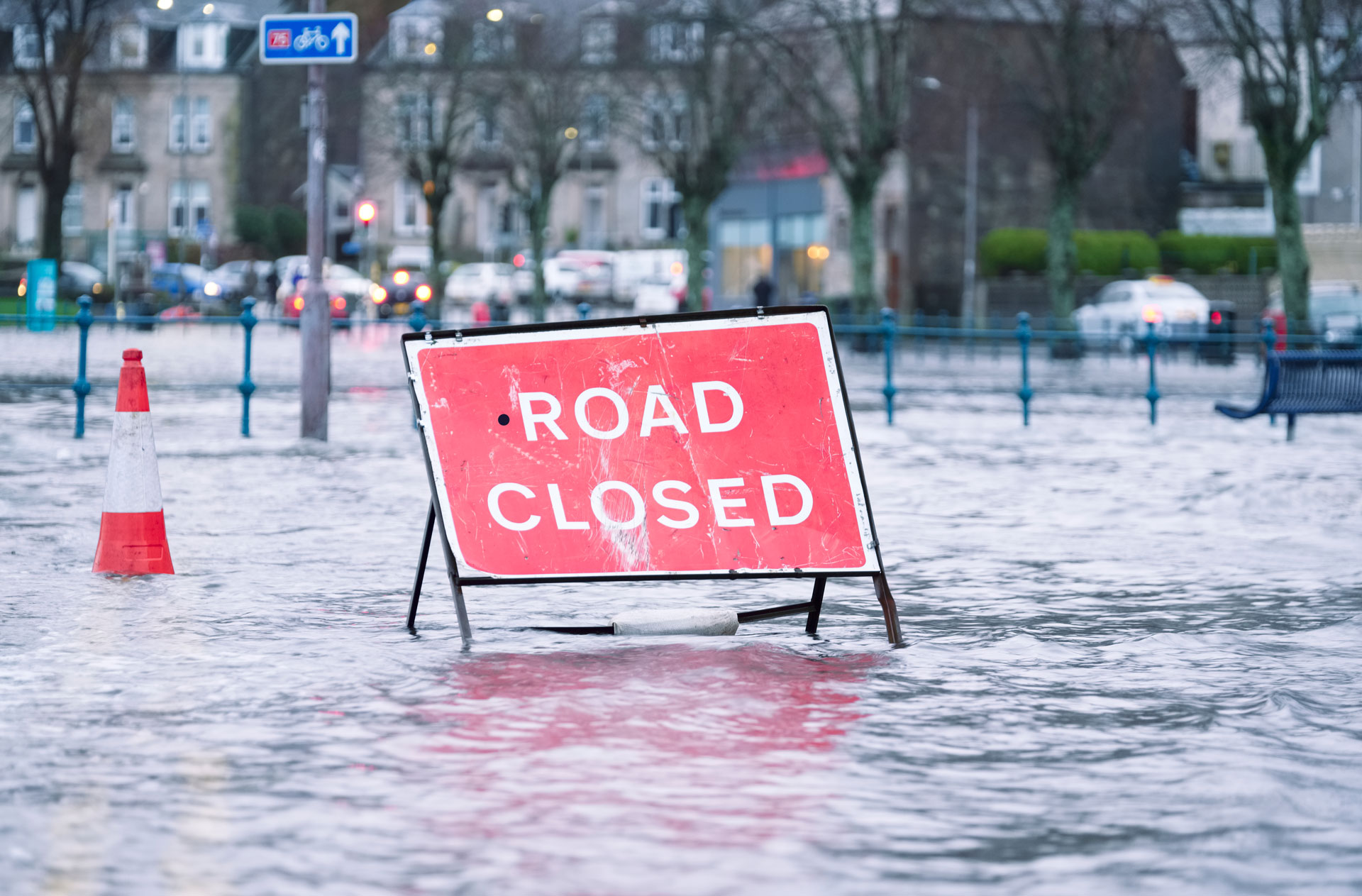
Whether coastal flooding, or a blocked, overflowing drain from excess surface water, the UK is known for its floods, especially in November to early March.
But did you know that there are five types of flooding in the UK? Each of these types bring their own challenges and can cause devasting damage to affected areas.
Around one in six homes in the UK are at risk of flooding and 2.4 million people live in areas at risk of serious flooding. As flood restoration experts, we have seen first-hand the damage that floods can inflict on a property, as well as the different types of floods that the UK experiences.
What Are the Different Types of Flooding?
Across the UK, we have five main types of flooding, including:
- 1. River
- 2. Coastal
- 3. Surface water
- 4. Groundwater
- 5. Sewer
The risk level for flooding changes depending on where you live in the UK, which will be impacted by the local geography of the land. For example, living near rivers can increase the likelihood that a flood will affect your property.
1) River flooding
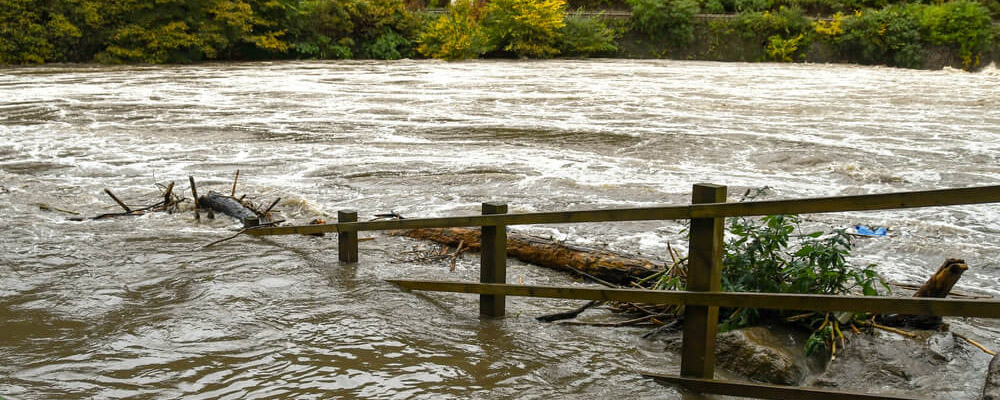
River flooding is one of the most common types of flooding in the UK, as the country’s landscape is interlaced with a series of streams, rivers and natural waterways. River flooding, also called “fluvial flooding”, happens when the flow of the river exceeds the banks. There’s also an increased danger as river flooding is often fast flowing due to river currents.
What causes river flooding?
River flooding is caused by an excess of water, which can be due to:
- a build-up of water after a blockage downstream
- an increase in water levels due to heavy rain
- flood defences redirecting water, causing a sudden increase in water levels
- snow or ice melting into waterways
What is the risk of river flooding?
As the UK is prone to high volumes of rainfall and has flood defences in place to protect historical flooding areas, the general risk of a river flooding is higher than other types. The closer you live to a river the higher the chances of sustaining flood damage.
The government says that to be at high risk of flooding from rivers (or the sea) the chance of flooding occurring must be 3.3% or higher. You can check your long-term flood risk using the governments postcode lookup here.
How much damage can river flooding cause?
As rivers often have fast currents, river flooding can cause increased damage when compared to other flood types. Fast currents can move cars, larger items and carry heavy debris around. Similarly, rivers that are connected or near to sewage works can contaminate local areas with brown water, requiring extensive decontamination.
2) Coastal flooding
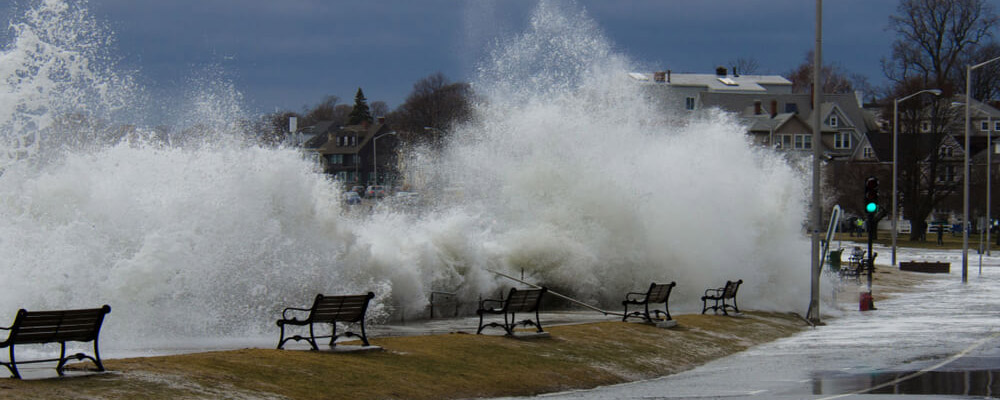
For those living close to the sea, there is always a risk of coastal flooding. The UK is a small island surrounded by oceans, seas and windswept coastlines, so the risk of floods from the coast is always there.
What causes coastal flooding?
Coastal flooding is always caused by the sea getting too high. However, this can be due to high tides that fall out of predicted patterns, stormy weather and weather fronts, as well as climate change.
What is the risk of coastal flooding?
If you live near the sea, then the risk is higher depending on the cliffs, sea barriers and other blockades. For anyone inland, the only time that there may be a risk of flooding coastally is if the sea surges through an estuary and you live near a river. The currents of a sea surge can be devastating and have the same impact as a flash flood, as the flood water can quickly surge downstream and overwhelm flood defences, causing serious damage.
How much damage can coastal flooding cause?
Thanks to the height and velocity that waves can have, damage can be significant. Coastal properties should have extra protection on sea facing windows, and any loose belongings should be secured and taken inside.
As seawater contains high salt levels, the damage to properties and cars can be exacerbated by this. Similarly, the long-term erosion to cliffs and other coastal landscape features is made worse by excessive storms.
3) Surface water flooding
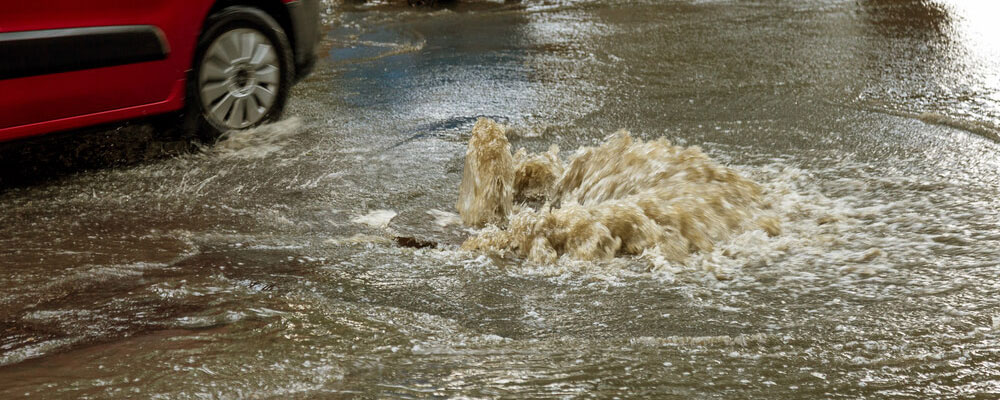
Surface water flooding is one of the most common types of flooding to affect the UK and, what’s worse, it can happen to anyone.
As surface water flooding is caused by something as small as a blocked drainpipe, it realistically could happen across the country, regardless of geographical features.
What causes surface water flooding?
- 1. Surface water can be caused by numerous factors, including:
- 2. Blocked drain covers
- 3. Rainwater running off roads into ditches
- 4. Reduction in vegetation/ increase in tarmacked areas
- 5. Increase in building works
- 6. Burst pipes, perhaps after an icy spell
What is the risk of surface water flooding?
Unfortunately, for everyone, there is always a small risk of surface water. The Government website even says “Flooding from surface water is difficult to predict as rainfall location and volume are difficult to forecast.”
There are some places, such as those on lower land, or in areas where surface flooding regularly happens, where you may be at a higher risk than anticipated.
How much damage can surface water cause?
The amount of water in surface flooding can be minimal, but more often than not, it occurs in busier areas leading to greater disruption. Whether this is a flooded road or drains that need clearing, the damage can be disruptive and impactful.
Surface water flooding can happen in areas that are not used to flooding and may not be as prepared, which causes more damage, as there is a lack of flood barriers and preparedness.
4) Groundwater flooding
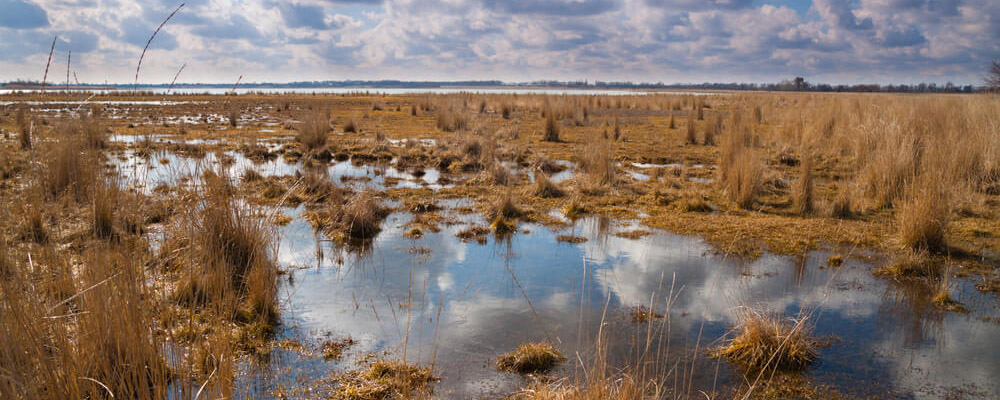
While uncommon in the UK, groundwater flooding does still happen in hilly areas, or places with poor drainage. If there has been recent building works, or a reduction in vegetation the risk can be higher. For those with homes built on areas of high risk, a waterproof membrane should be installed to protect the house.
What causes groundwater flooding?
When rain occurs over an area, and the ground can no longer absorb any more, the water will flow over the surface and seep up into homes, through roads and drainage systems.
Heavy rain can cause groundwater flooding, but river flooding or another type of flooding could also cause secondary groundwater flooding.
What is the risk of groundwater flooding?
Across the UK, the risk of groundwater flooding changes regularly. Local authorities, when there is a flood alert in place, are required to provide situation reports, monitoring the local areas, and report them to the government.
How much damage can groundwater flooding cause?
The most damaging thing about groundwater flooding is the inability to drain it away easily, as it’s the ground itself that is waterlogged. It also means that there is a more likely a chance a wider area could be affected, creating more damage to homes and properties.
5) Sewer flooding
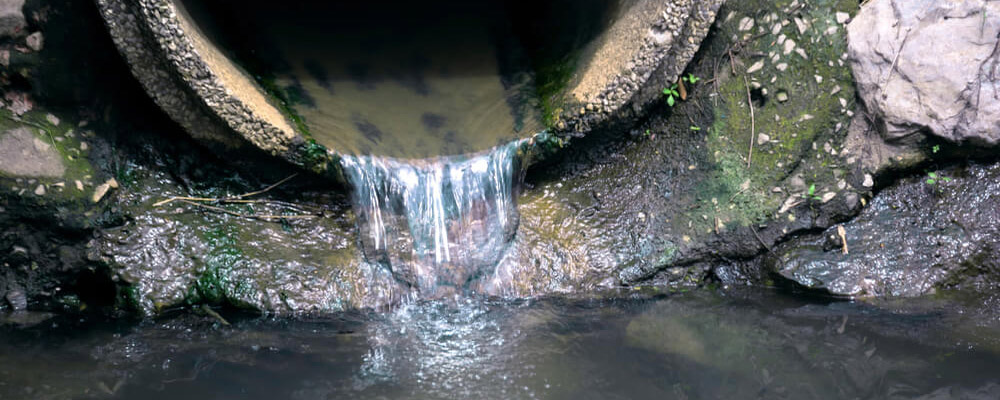
Here in the UK, we are lucky to have efficient sewer systems that ensure the safe removal of sewage waste. While sewer flooding can be devastating for homes, it thankfully doesn’t happen too often in the UK.
What causes sewer flooding?
Sewer flooding could be caused by a few things such as a broken pipe, unplanned maintenance works causing disruption, but most commonly it is due to a blockage in the sewer pipes.
What is the risk of sewer flooding?
Sewer flooding is a relatively low occurrence type of flooding, but it is possible. For example, in an area where there has been an influx of new residents but no upgrades to the sewer network, there may be a higher risk of flooding due to the number of people living in a high-density area.
How much damage can sewer flooding cause?
Due to the contaminated nature of sewage water, there is a high damage potential to buildings. Until a building has been fully decontaminated, it cannot be used if the flood water contained sewage.
Are you at risk of flooding and need a restorations company you can trust?
If you regularly experience flooding, or have been told you are at risk, speak to Restorations [UK] and we can provide expert flood decontamination and drying, and drying equipment for hire when needed.

